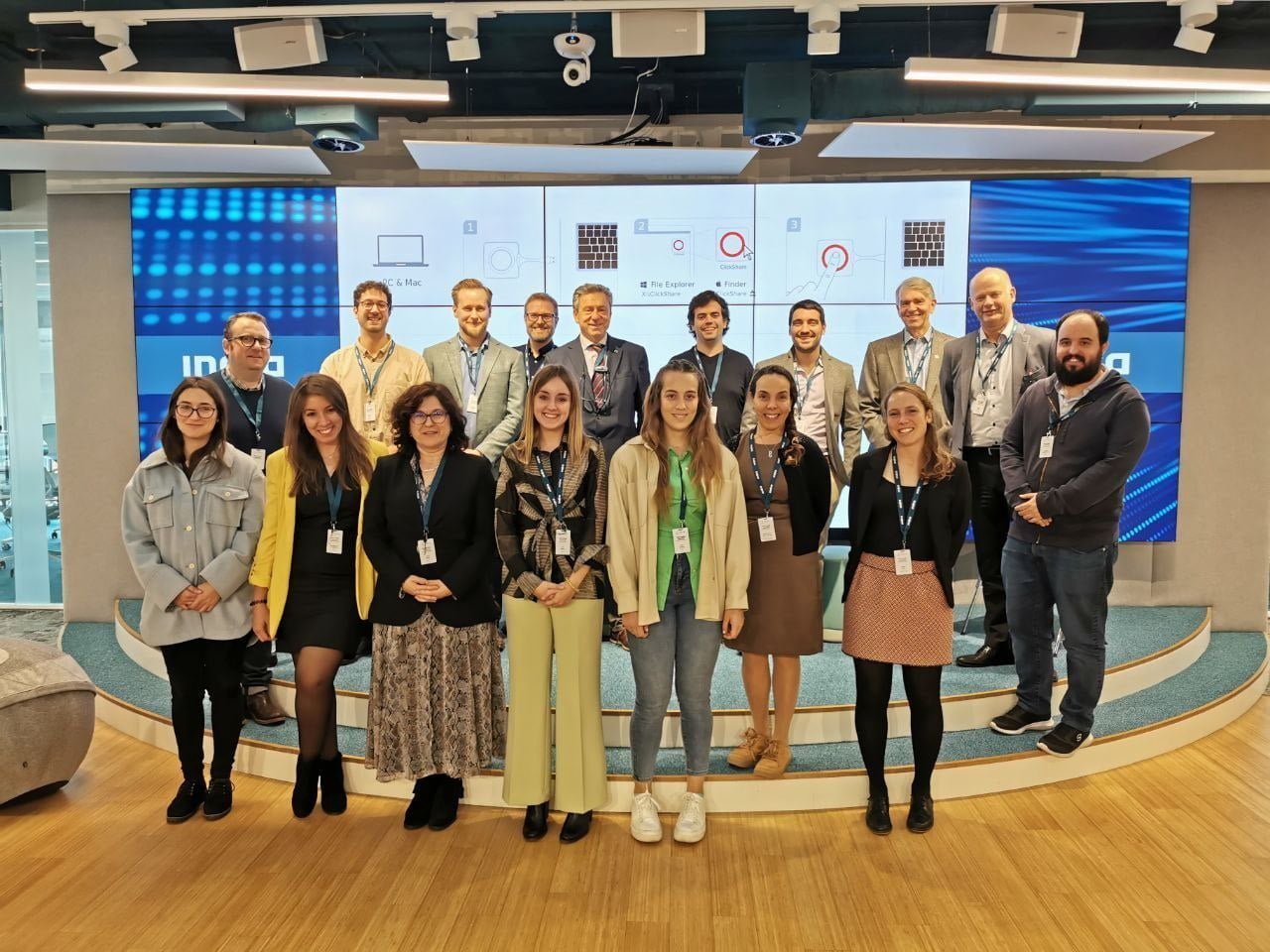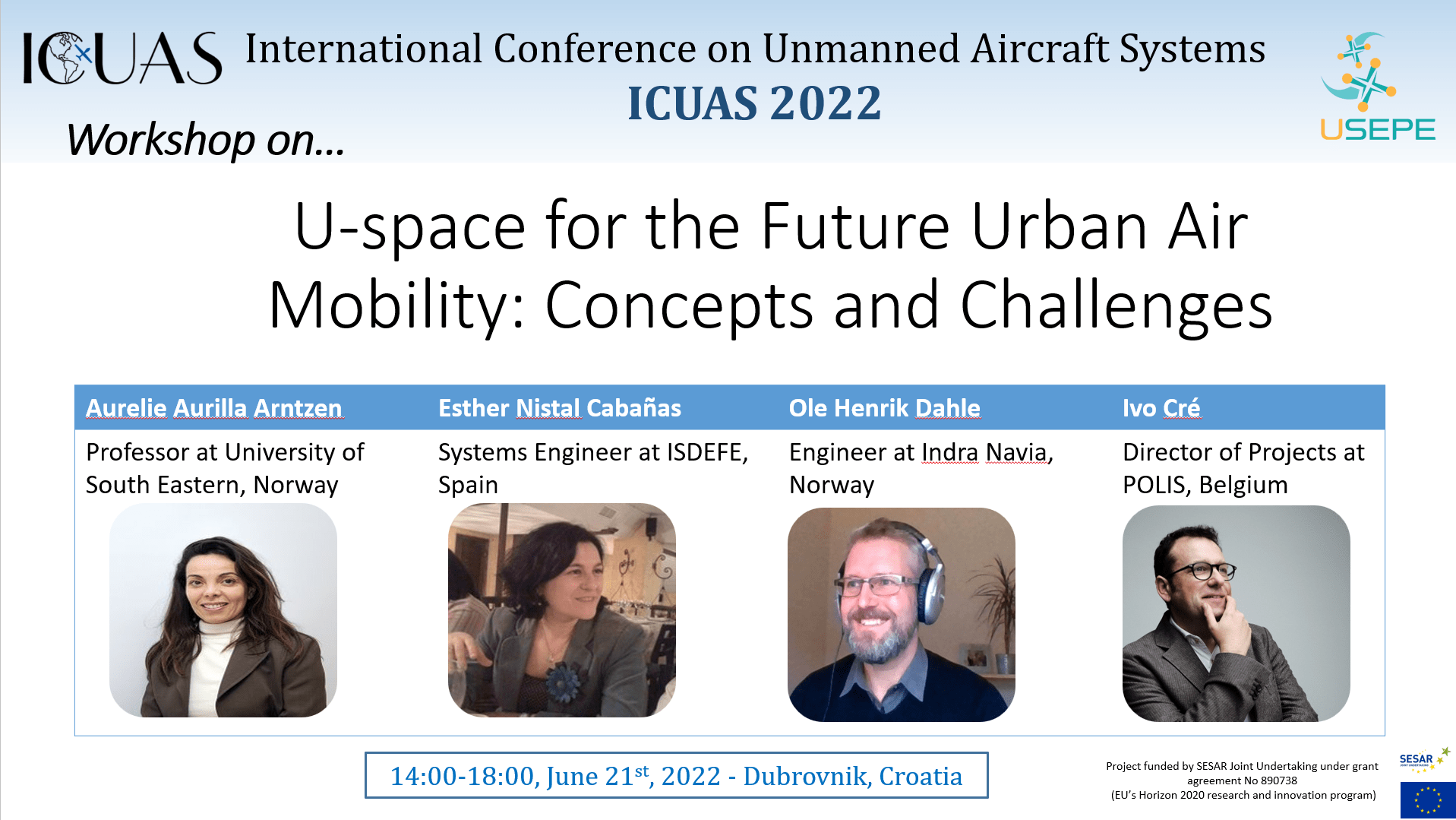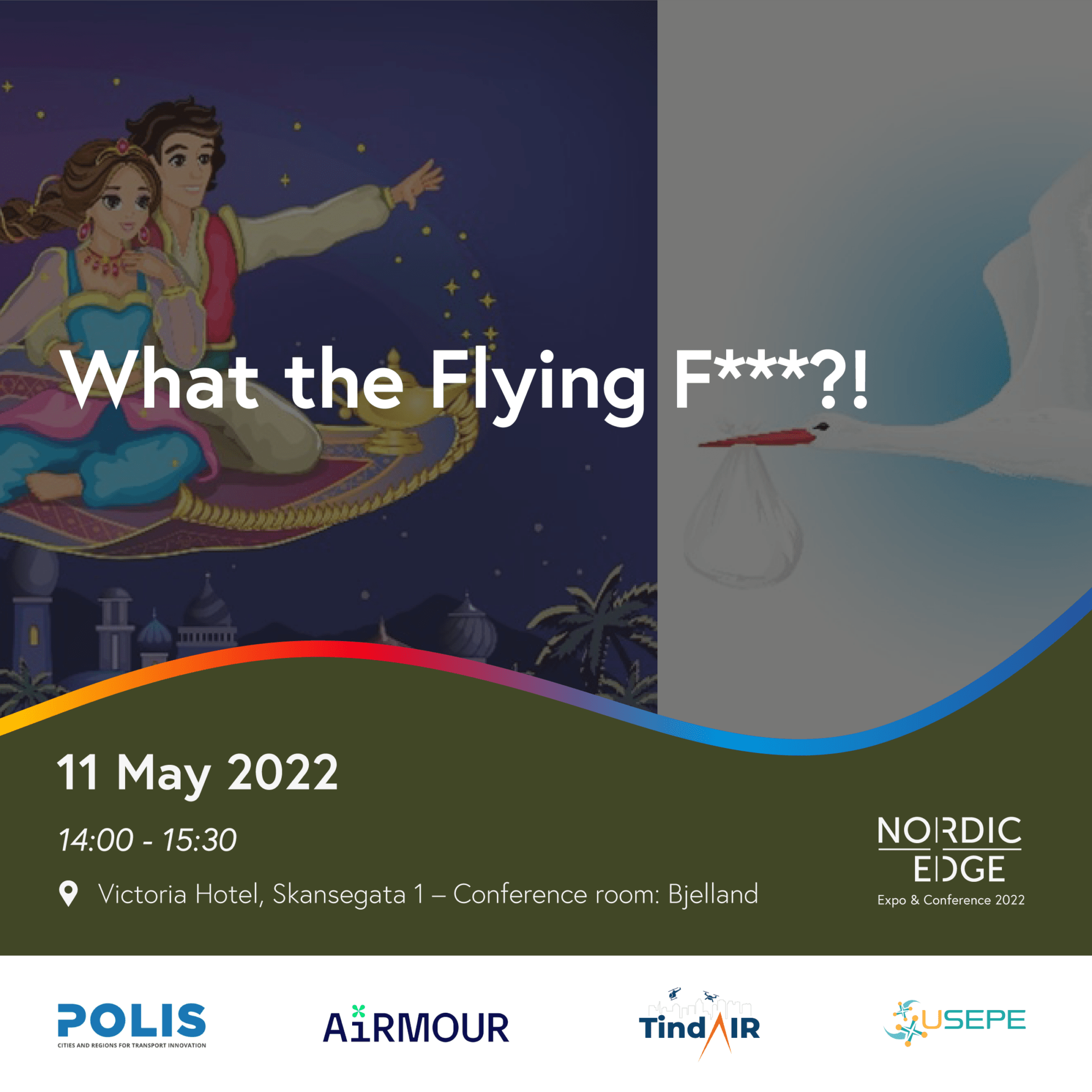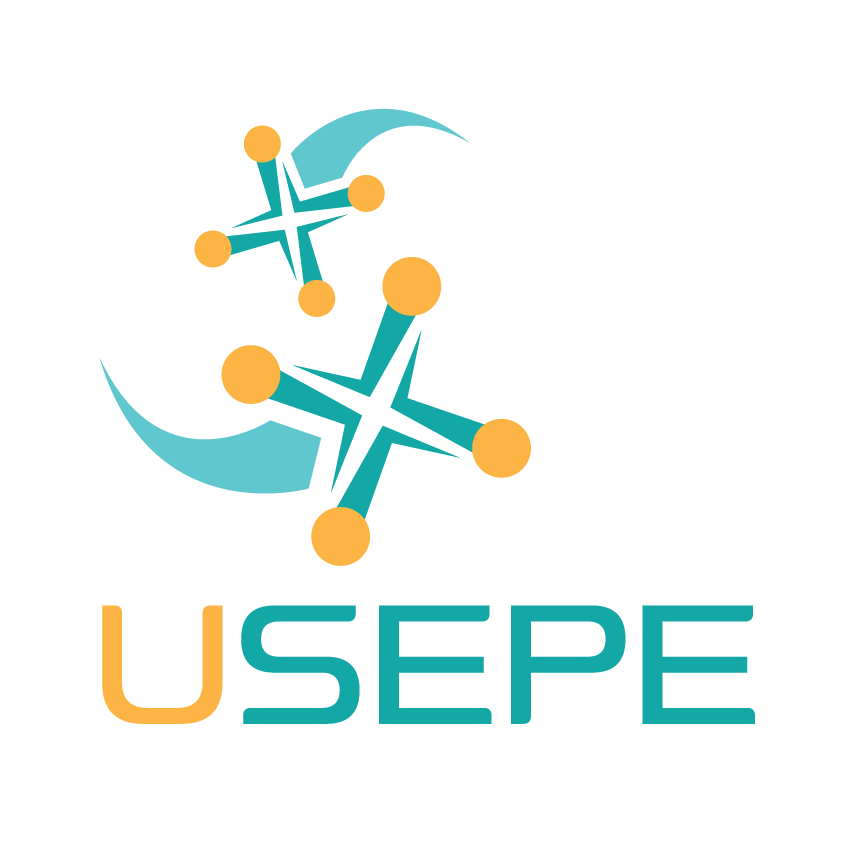Report and highlights on USEPE final ConOps workshop
USEPE FINAL CONOPS WORKSHOP: U-space for the future Urban Air Mobility: concepts and challenges have happened! The workshop took place on November 8 in Madrid at our partner site – Indra Sistemas. This event was hybrid for its first part covered a presentation of our drone separation method and validation exercises.
The main topic for this workshop presented the revised ConOps to the stakeholders and gathered input before the final version is published.
USEPE speakers:
- Leibniz University Hannover
- University of South-Eastern Norway (usn.no)
- Indra (indracompany.com)
- DLR
- Nommon | Artificial Intelligence for a sustainable future
- ISDEFE
 The event started with the open word by Esther Nistal Cabañas – presenting the overview of the project, all our achievements and how it affects Urban Air Mobility’s outlook. Followed by the presentation of Aurelie Aurilla Arntzen, the Communication leader of USEPE, talking about the concept of operations and the D2-C2 explanation by Ole Henrik Dahle.
The event started with the open word by Esther Nistal Cabañas – presenting the overview of the project, all our achievements and how it affects Urban Air Mobility’s outlook. Followed by the presentation of Aurelie Aurilla Arntzen, the Communication leader of USEPE, talking about the concept of operations and the D2-C2 explanation by Ole Henrik Dahle.
Later on, Niklas Peineke from DLR joined the meeting online and presented the segment capacity and deconfliction method used by USEPE – performance-based conflict detection with a 10/5/1 sec time frame to react for drones. he continues his presentation with the avoidance manoeuvres demonstration, which USEPE simulated in BlueSky. There 3 types of manoeuvers considered in our ConOps: horizontal, vertical, and speed change avoidance. All of the manoeuver types are also influenced by the drone type and its’ characteristics.
Esther continued with the update which is not included in USEPE on the CORUS-XUAM release of the U-space concept of operations (ConOps) Edition 4. It involves differences in VLL – Corus VLL – 500 ft AGL vs USEPE VLL – 900ft + 100ft buffer and actors’ differences.
Serkan Güldal from USN explained an AI Approach to Conflict Detection USEPE_ML, which is defined by USEPE based on gathering data, training and action. He defined a “Separation Quality” – a relative measurement from 0 (no separation at all) to 1 (perfect score). Therefore, the separation quality was used to test 100 drone simulations using the D2-C2 method, which resulted in the ratio of – 100 drones/3.76 hours – average separation score – 0.56 vs 27.64 – summary for conflict duration. As a result, the quantitative analysis provides information for the third phase of AI systems.

The simulation results were followed by the Miguel Baena presentation on BlueSky simulator requirements which is meant as a tool to perform research on Air Traffic Management and Air Traffic Flows and is distributed under the GNU General Public License v3.
Felix Wagner continued on the wind turbulence, its’ influence on the drone trajectory, definition of no-fly zones and possible pre-defined trajectory changes that may or may not occur based on the wind and weather conditions all simulated in BlueSky simulation of Hannover city in various scenarios such as a last-mile delivery scenario in Hannover city centre or Emergency delivery.

After the theoretical and quantitative part of the USEPE, we moved to the Validation exercises led by Miguel Baena and Joakim Rydberg. It consisted of the validation exercises performed by USEPE, mainly:
- Last mile delivery – 3 simultaneous parcel delivery with adverse wind situation scenario
- Emergency situations – riot surveillance and emergency blood transfer with unexpected emergency drone flight scenario
- Urban surveillance – simultaneous surveillance of traffic jams & building inspection with a loss of C2 link & air convection scenario
Those exercises used a reference and D2-C2 drone paths distribution and confirmed the following:

- Better altitude distribution using D2-C2
- Better space capacity
- D2-C2- reduces conflicts appearance by more than 50%
- D2-C2 improves usage of the airspace especially among altitudes from 0 to 500ft
- Traffic distribution is even in both D2-C2 and reference traffic concentration. However, D2-C2 manages segments above the airport better
- Reduction on false-positive – changed the detection model in BlueSky simulator – our system doublechecks the conflict. Therefore, we are more confident in conflict appearance and possibility. That results in far more accurate final results.
After a bit of a break and off-the-table discussions, USEPE started a round discussion – focused on the USEPE method validation discussion with the authorities' representatives, regulatory institutions, and audience.
After a hard working day of presenting, revising and fruitful discussions USEPE final ConOps event at Indra Sistemas was officially closed.
More information
For more information on USEPE and upcoming events visit the project website.
In case of any questions, suggestions, etc. contact Dzvenyslava Tyslyukevych and Manon Coyne.







